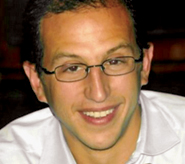In light of the recent market problems involving Knight Capital Markets, Traders Magazine presents an encore column by Dan Mathisson concerning the importance of standards for algorithm developers. This article originally ran on December 21, 2010.
I have a friend who is a licensed beekeeper. He had to take a written test administered by the state, presumably to ensure he would not do anything dangerous, like persuading local allergic children to copy that “bee beard” guy in the Guinness Book of World Records. A surprising number of jobs require licenses-in New York, you can’t cut hair without a barber’s license, cut wires without an electrician’s license or cut a deal on a house without a real estate broker’s license. The New York Times reports that licenses nationally are at a record high, with 31.6 percent of full-time workers requiring a federal, state or local license. James Bond is licensed to kill, Jimmy Buffett is licensed to chill, and the Beastie Boys are licensed to ill. And now add algorithmic trading developers to the list, who may soon become licensed to fill.

We recently learned that the Securities and Exchange Commission is “considering standards for the professionals who program the [algorithmic trading] codes,” according to the Financial Times. At the Investment Company Institute’s December conference, David Shillman, a senior policy maker at the SEC, said that the SEC was considering several new controls for electronic trading desks-everything from licensing developers, to establishing consistent roll-out procedures, to adding “some sort of throttle if an algo is behaving too aggressively.”
The algorithm developers who work for me were not thrilled to read about this. They immediately began dreading having to study for the Series 666, then being forced to add Big Brother’s throttle to their elegant code, and then having to spend the rest of their professional lives filling out form PW-6(b) in triplicate before being allowed to release a new version of VWAP. But at the risk of a worker revolt, I have to admit that Shillman has a good idea. In the wake of the “flash crash,” which was partially blamed on the unfortunate coupling of a very large futures order with an algorithm that had insufficient brakes, the industry needs to acknowledge a basic truth: We are all better off with clear rules and standards that prevent market disruptions and career-ending errors.
Six weeks after the flash crash, the regulators rolled out the pilot for the first of the new controls-the successful single-stock circuit breakers, which briefly halt trading when a stock drops 10 percent within five minutes. Although the circuit breakers have made a repeat of May 6 highly unlikely, a large order can still cause an ugly enough move to send a trader or algo developer on a long unplanned vacation.
To prevent errors, responsible brokers have long incorporated careful testing and roll-out procedures, “fat-finger” checks and various computer bug checks into their algorithmic systems, catching and flagging both inbound and outbound orders that appear larger than what the market can safely absorb.
But while many brokers already have effective electronic trading controls, there are two problems with the current “save thyself” system. First, not all brokers have adequate risk checks. This is dangerous for everyone. A big error caused by a single firm can rapidly cascade into a big mess at many firms, as systems that normally run immaculately react to unusual situations in unexpected ways, and the disruption spins out of control. In other words, no one can be sure they’re safe until everyone is safe.
The second problem with the current system is that each brokerage firm designs its own checks, and each has completely different safety procedures. Institutional clients, who typically use multiple algorithmic brokers, need to painfully vet each broker one by one and learn which specific safety mechanisms each of their brokers has in place, while each broker has to painfully learn from his own mistakes. Establishing minimum industry standards for fat-finger checks and “algo-gone-wild” checks would make life easier, safer and ultimately cheaper for the buyside, and would increase the stability of the overall markets.
But it is not necessary that these industry standards come from the regulators to be effective. In the airline industry, many safety procedures come from an industry group called CAST (Commercial Aviation Safety Team) that works closely with the authorities. Wall Street could do the same. Through the group that brought us the FIX protocol, the algorithmic trading industry has already begun an effort to unify risk and fat-finger checks. Just as FIX standardized how we all send and receive orders and fills, the industry can effectively standardize algo risk checks, too.
Once we have an agreed set of standards, the industry will need some way of ensuring that all these thoughtful new safety mechanisms are understood by the developers who actually write the code. For many years, traders and salespeople have had to take the Series 7 “Registered Representative” exam, which demonstrates an understanding of market rules and regulations. I suggest it’s time for a new license, “Registered Algorithm Developer,” for people who are directly involved in coding or supervising algorithmic trading code, who do not already have a Series 7 license. Questions would cover basic rules and regulations of our securities markets, review quality assurance and proper roll-out procedures, and most importantly, verify that they understand proper algorithm nomenclature-that algo names must always have their origin in the fields of military history or espionage, or else be a complicated acronym.
As the last step to becoming a Registered Algorithm Developer, I suggest we take a page from medicine’s playbook, and incorporate a customized version of the 2,000-year-old Hippocratic Oath. All algo developers who have passed the exam will raise their right hand and vow, “I will only code for the benefit of the markets. I will create no harmful algorithms, even if asked. I will not allow the machines to rise up and destroy humanity. If I fulfill this oath and do not violate it, may it be granted to me to enjoy long life and many bonuses; if I transgress it, may the opposite be my lot.”
Having then demonstrated their knowledge of the new risk standards, and having taken a solemn oath to do no harm, the newly certified algo developers will take their rightful place in the licensed professional world with my friend the beekeeper.
Dan Mathisson is a columnist for Traders Magazine, and the Head of U.S. Equity Trading at Credit Suisse. The opinions expressed in this column are entirely his own, and do not necessarily represent the opinions of the Credit Suisse Group, Traders Magazine or its staff.
Traders Magazine welcomes reader feedback on this column and on all issues relevant to the institutional trading community. Please send your comments to Traderseditorial@sourcemedia.com




